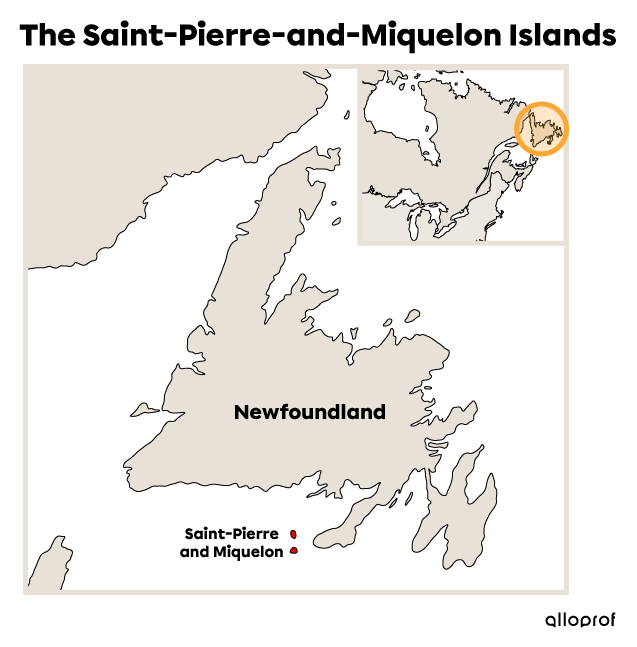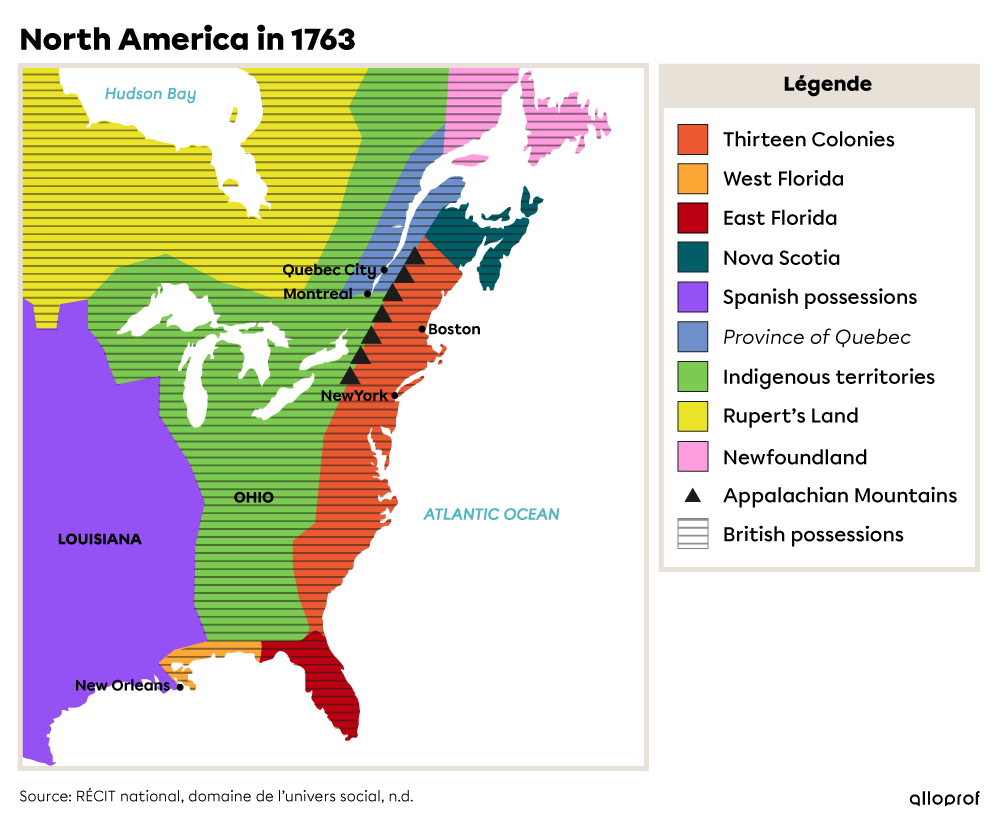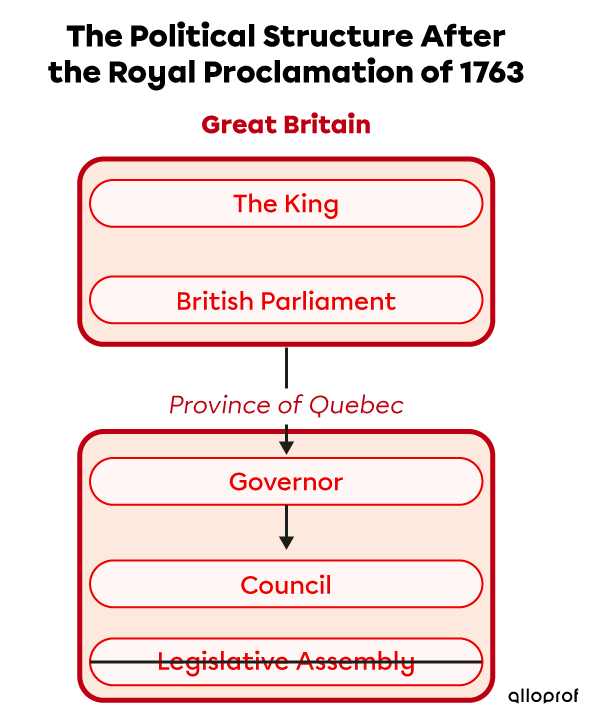The Seven Years’ War officially ended on February 10, 1763, with the signing of the Treaty of Paris. France was defeated and ceded New France to Great Britain, the victor. However, France retained Saint-Pierre-and-Miquelon, as well as a right to fish in the St Lawrence River and to dry fish on Newfoundland’s coasts.

However, the Treaty of Paris provided very little information about administering the new British colony’s territory and population. It only stipulated that the habitants had the right to leave the colony in the 18 months following the signing of the treaty and that they could practise the Catholic religion. The colony’s political, legal and administrative structures were not defined until the first constitution was drafted in October of 1763. It was called the Royal Proclamation.
A constitution is a legal document determining a State’s organization and structure. It is often the founding document. It includes all the laws regarding legislative, executive and judicial powers and their jurisdictions. It also contains the laws that structure the various institutions, as well as individual rights and freedoms.
The Royal Proclamation defined North America’s new borders. A portion of New France, populated mostly by settlers of French origin, became the Province of Quebec. Its territory was limited to the Saint Lawrence Valley.
The term “province” in “Province of Quebec” meant “colony” during this era.
The Ohio Valley and the Great Lakes region were included in a massive territory reserved for Indigenous peoples. With this, Great Britain attempted to ease tensions between Indigenous peoples and British settlers. However, this displeased settlers in the Thirteen Colonies who wanted to expand their territory to the west following the conquest of New France.

The colonies of Nova Scotia and Newfoundland were expanded. From then on, the Hudson’s Bay Company controlled the territory of Rupert’s Land.
The Royal Proclamation ended the military regime and implemented new political, judicial and administrative structures in the Province of Quebec.
The King of Great Britain was at the top of the political structure in the Province of Quebec. Unlike the King of France who was an absolute monarch, the King of Great Britain reigned as a constitutional monarch. Even though he was the head of State, he shared certain powers with the British Parliament.
In the Province of Quebec, the governor, who held all the powers, was assisted by a council whose members he appointed, most of whom were British. Though the bishop was once part of the Sovereign Council in New France, the Catholic Church was now excluded from political power. A legislative assembly, which existed in Great Britain and the Thirteen Colonies, was considered but never actually implemented.

-
Absolutism, or absolute monarchy, is a political system in which the ruler holds all the power. To strengthen his authority, the ruler could claim to derive power from God. This is known as the divine right of kings.
-
A legislative assembly includes elected representatives who write and vote on laws.
French laws were abolished and replaced by English civil and criminal laws. Justice was no longer administered by the authorities, but by a chief justice. Lands were granted in accordance with English laws (townships) in an unsuccessful attempt to end the seigneurial system. To boost British immigration, the king offered land free of charge to soldiers and British officers who already lived in the colony. Trade was now unrestricted for all habitants, except on land reserved for Indigenous peoples for which a permit was required.
-
Civil laws relate to marriage, divorce, inheritance, land distributions, property and trade.
-
Criminal laws relate to fraud, assault, homicide, theft and high treason.